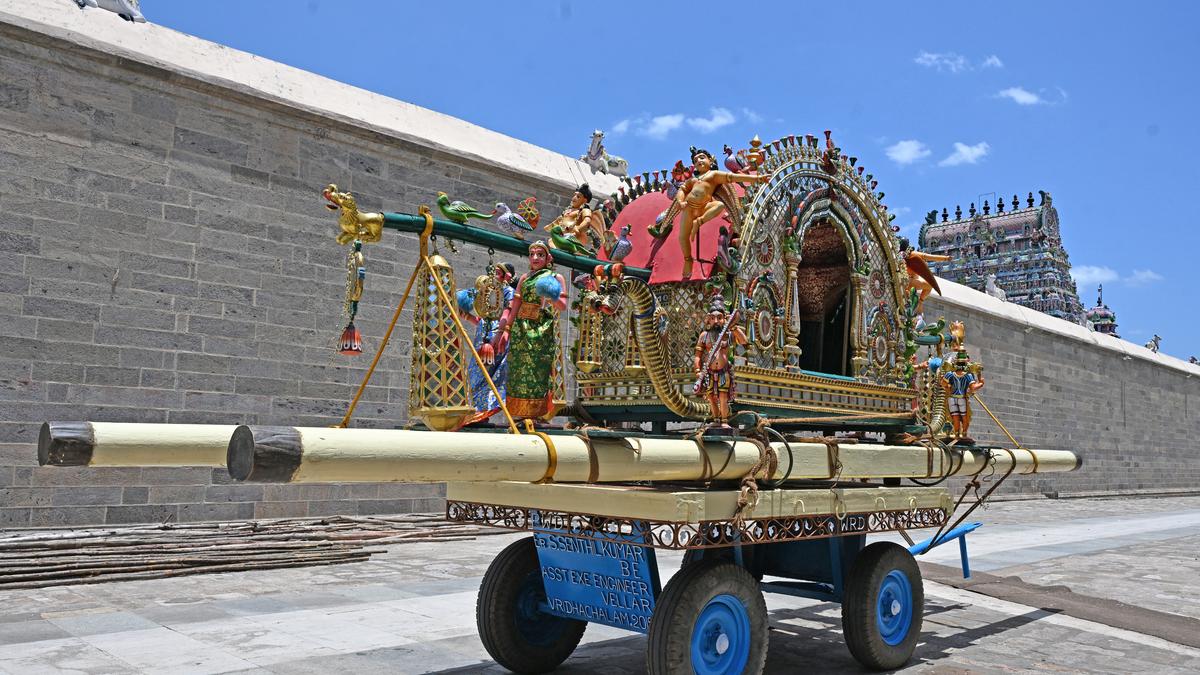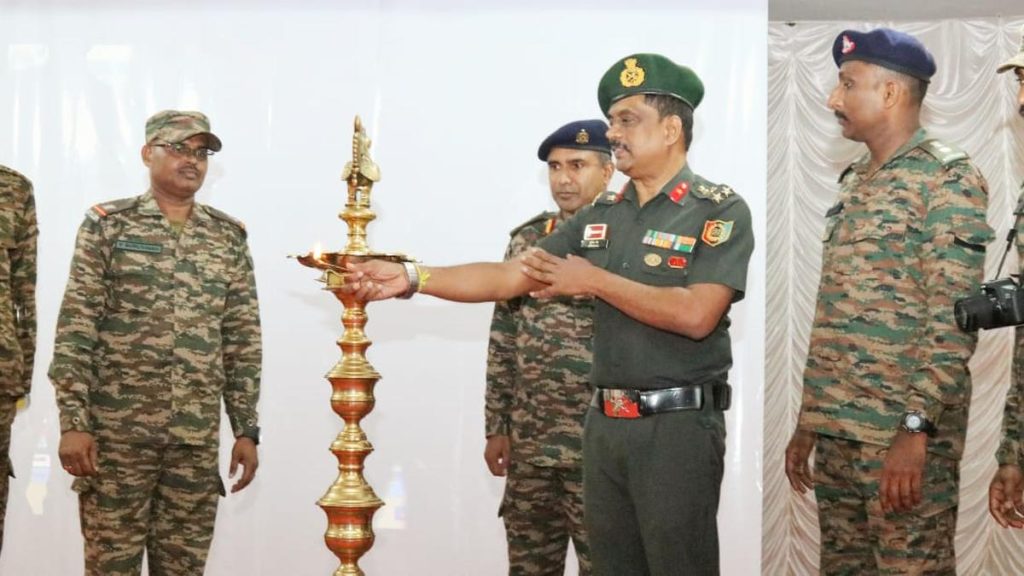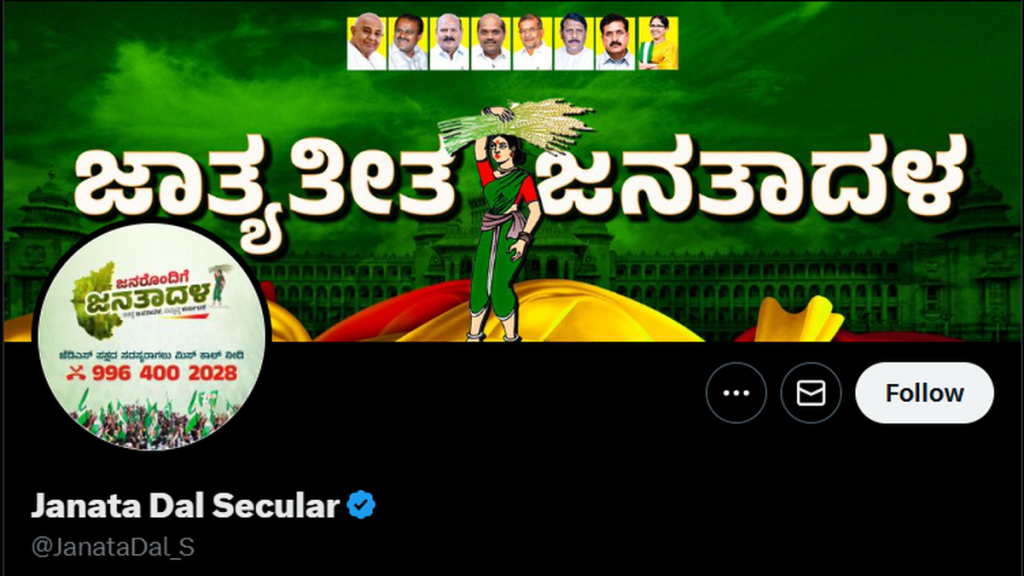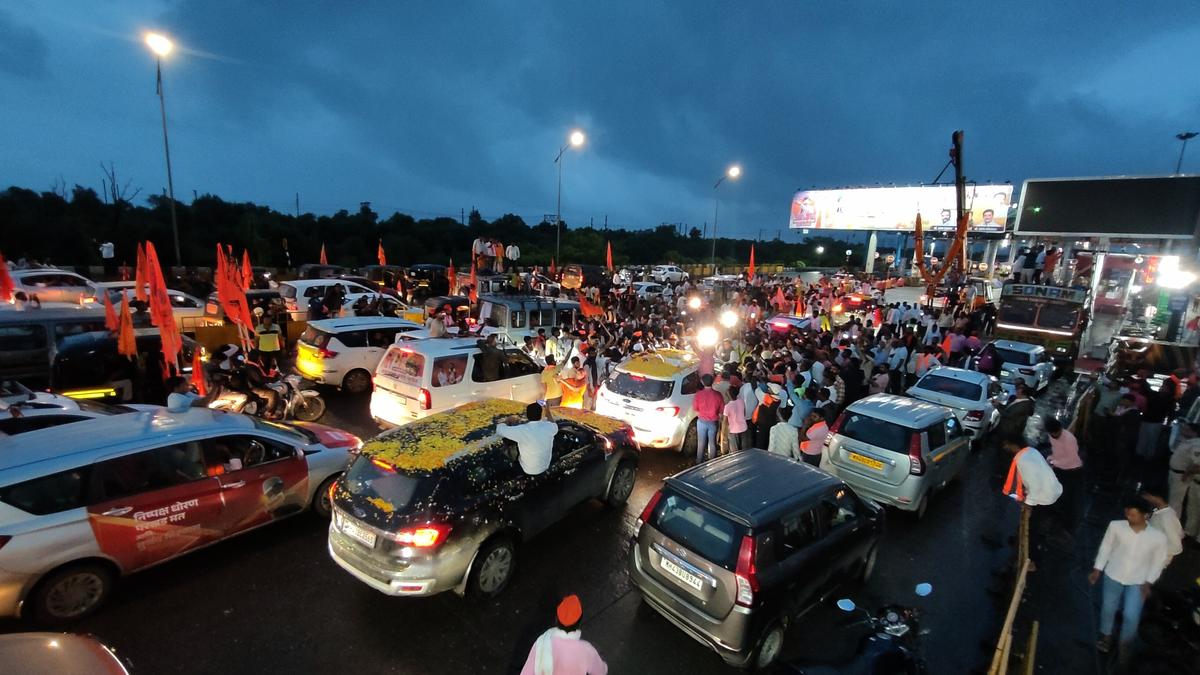Now Reading: State Departments Clash Over Roles at Vriddachalam Temple Festival
-
01
State Departments Clash Over Roles at Vriddachalam Temple Festival
State Departments Clash Over Roles at Vriddachalam Temple Festival

Quick Summary
- A unique custom dating back to the British era is observed annually in Vriddachalam, Tamil Nadu, during the Tamil month of Aadi (mid-July to mid-August).
- The aadi Pooram festival includes a celestial wedding (Thirukalyanam) between Lord Viruthagireeswarar and goddess Viruthambigai.
– Public Works Department acts as the bride’s side, while Revenue Department plays the groom’s side.
- Celebrations span 11 days:
– Rituals begin with a ceremonial flag-hoisting.
– Temple cars are drawn through four streets on day nine by devotees before dawn.
– On day ten, Goddess Viruthambigai is paraded in an ornate Spadiga Pallakku (glass palanquin) gifted by a British engineer in 1910.
- The temple showcases dravidian architecture and has been linked to past Chola and Pallava dynasties. Its renovations were supervised by royal patrons like Sembiyan Mahadevi.
- The name Vriddachalam translates to “old hill,” although no visible hill exists at present. Legend says it sank beneath the earth long ago.
Indian Opinion Analysis
The preservation of the Thirukalyanam tradition in Vriddachalam highlights how cultural practices steeped in history continue to embody collective memory and communal participation. From collaborating state departments symbolizing familial roles to contributions from colonial-era figures like a British engineer-different historical threads weave into this enduring ceremony. Moreover,this event underscores how temples frequently enough represent not merely religious centers but also socio-cultural hubs reflecting architectural excellence and regional legends.
While nostalgic festivals undoubtedly bolster local tourism, they also serve as potent reminders of shared heritage across time periods-ancient dynasties through British colonial engagement to modern governance structures. Maintaining such traditions can affirm cultural continuity while fostering inclusivity amidst evolving societal dynamics.
Read more: original Article
























